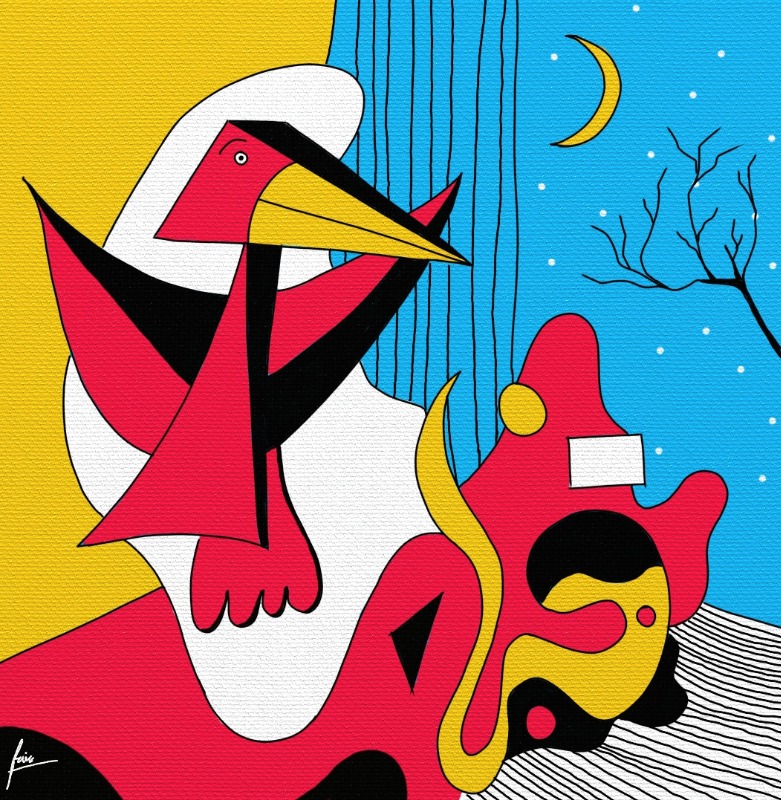
Artist name: Faiz Al Baihaqi
Title: Red Bird
Description: Using digital artworks
Art Critic: [70] It is clear from the outset that “Red Bird” is an amalgam of stylistic influences that range from the boldness of Modern art to the whimsy of contemporary illustrations, threaded through digital media execution. The strong and vibrant color palette directly engages the viewer, eliciting an immediate emotional response. The primary yellows and reds are confidently set against a cooler background of blue, with a desaturated moon and stars that provide a grounding, nocturnal feel.
The artwork plays with forms and lines in a manner reminiscent of Cubism, evoking the fragmentation and reconstruction of reality. This is evident in the stylized approach to the bird’s representation, abstraction, and the disjointed interplay between figure and background. The use of texture in the digital medium to mimic a canvas gives the piece an interesting juxtaposition between traditional painting and digital art, blurring the lines between the two worlds.
Compositionally, the division of the canvas into distinct segments of color and the varied patterns within those contribute to a strong sense of dynamism and rhythm. The artwork hints at a narrative, possibly involving the dualities of nature and imagination – an area ripe for further exploration that tantalizes the mind’s eye.
While the work may not challenge the viewer conceptually as deeply as the masters like Picasso or Dali, it is executed with a level of sophistication and a clear understanding of art principles and digital techniques. The artist behind “Red Bird” seems to be forging their own unique path, showing respect to the myriad of art movements that came before, while confidently contributing to the realm of digital art.
Overall, the energy, the contradictory harmony between the abstract and the recognizable, and the blend of techniques render “Red Bird” as a compelling piece. It holds its own space within the digital art sphere and presents an intriguing visual conversation between the past and the present, tradition, and innovation.
